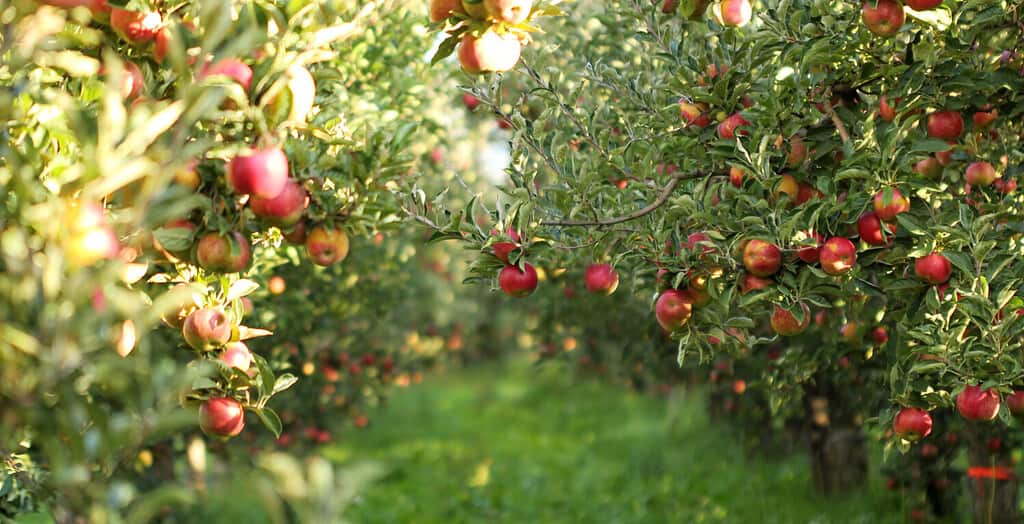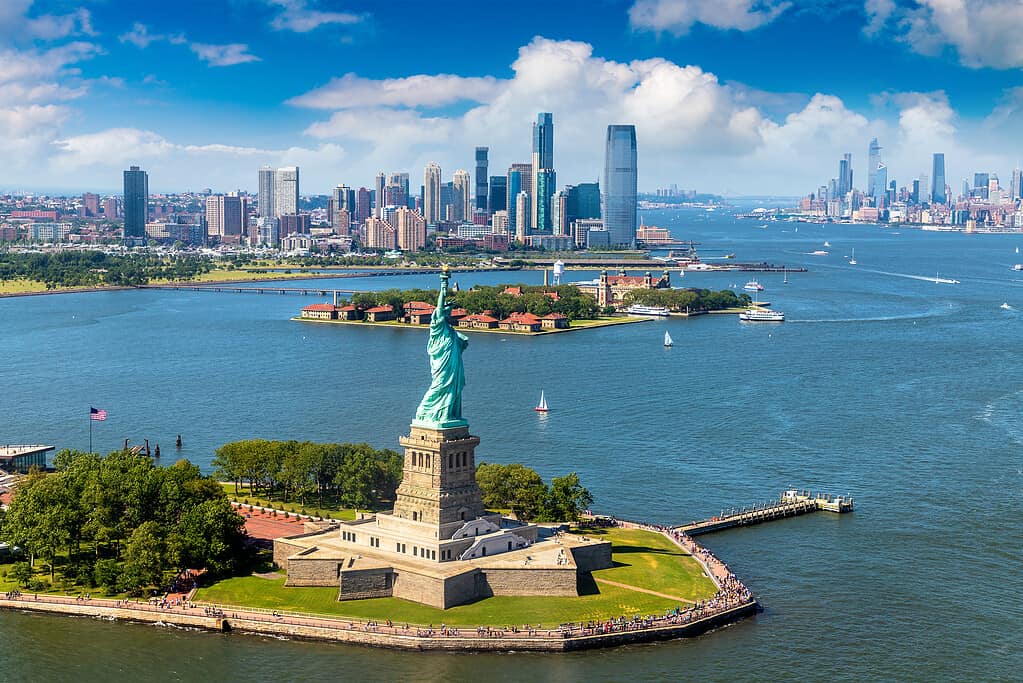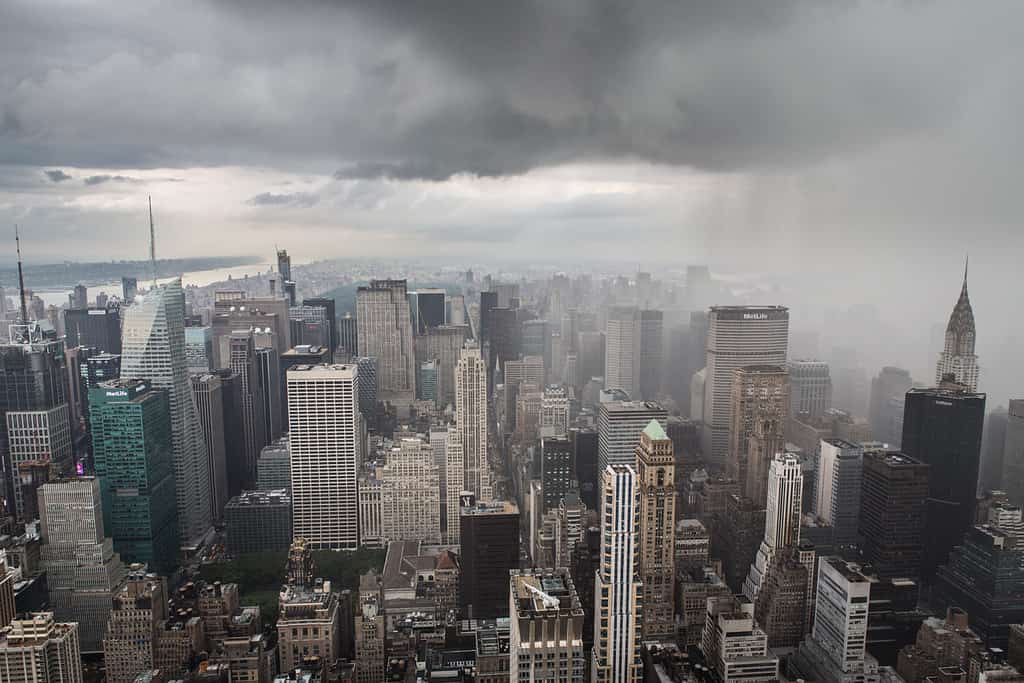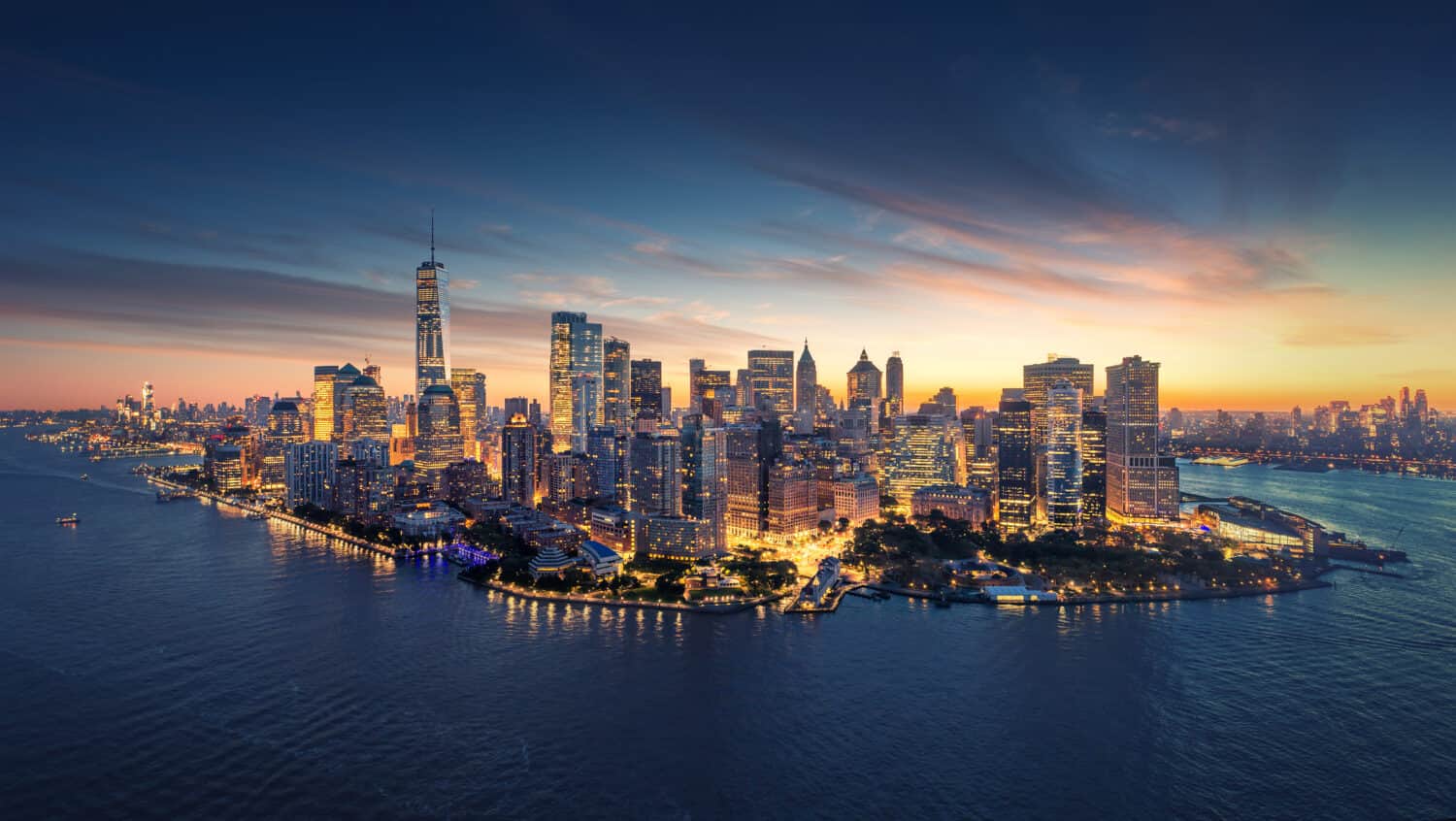As the city with the largest population in the United States, New York City has always been a major people magnet. It not only has the highest population of any city in the United States, but it’s also the most visited city there. Welcoming millions of people almost daily, it’s clear how its popularity has spiked so much over the years. Accompanying that level of adulation, we have heard the city called many things over the years, but nothing has had quite as much traction as the Big Apple. Who originated this name? When did it gain popularity?
Apples in New York State

The only state that consistently produces more apples than New York is Washington.
©agrofruti/Shutterstock.com
New York State is one of the largest apple producers in the United States, behind only Washington most years. In fact, the state produces billions of apples a year. Apples have been a part of the state’s culture for as long as it has had a culture. While they came along with the first settlers amongst many other kinds of fruit, ultimately, apples dominated the state’s agriculture.
Some may speculate that to be the reason the name ‘Big Apple’ was born. Despite that, the nickname isn’t connected to the state’s agricultural feats. That’s because the state’s agriculture is found mostly outside of New York City, in areas consisting of farms and land, where agriculture is the main way of life for many. In truth, the name ‘Big Apple’ owes its origin to New Orleans and its culture.
The Big Apple

The Statue of Liberty is an iconic symbol of welcome and freedom in the U.S.
©iStock.com/bloodua
The term ‘big apple’ is often acknowledged to mean ‘the big prize’ or ‘reward.’ It first made its appearance around 1920. It was used to allude to the most sought-after prizes, which were often awarded at the horseracing courses sprinkled throughout the city.
At the time, the term ‘Big Apple’ was referenced with regard to New York City in conversation amongst some African American stable hands in New Orleans. They often referred to New York City as ‘the Big Apple’ because, for young stable hands enamored with the horseracing courses in the city, that’s exactly what it was. New York City was the prize to them, as was being able to see the things there that they had dreamed of for so long. Use of the term was such a frequent occurrence that a journalist from New York City on the horseracing beat happened to overhear it. Soon after, it became a part of his own vocabulary.
The Jazz Musicians
The journalist went on to use the term frequently throughout his pieces. Around the 1930s, jazz musicians picked it up. Was it a mere coincidence that stablemen created the term in New Orleans and then it was subsequently kept alive in jazz music for years? New Orleans was the birthplace of jazz music, but New York is where you went to hit it big. This made it even more customary to refer to it as the ‘Big Apple,’ as in more and more people’s eyes, New York City was becoming the key to their aspirations. A common quote of their time was, “There are many apples on the tree, but only one Big Apple.” However, as time moved on, the nickname began to die off and lose its traction.
New York City Crime Surge

New York City’s crime rate was at an all-time high during the 1970s.
©Gorodenkoff/Shutterstock.com
Later in the late 1960s and the early 1970s, the term ‘Big Apple’ resurfaced. During this time, New York City was facing a severe surge in crime. The once great city slowly started to creep into decline. It was a sensitive time for New York City already, with the massive recession, deindustrialization after World War II, bankruptcy, and the highest unemployment rates since the Great Depression. The crime sprees were truly the straw that broke the camel’s back, and a bad reputation for the city soon came to follow. Instead of the gleaming star it was once acknowledged to be, it was a dark and decrepit place.
The Ad Campaign That Saved the City
In a last-ditch effort to scrounge up the remnants of its reputation, the city hatched a plan to increase tourism. Charles Gillett, president of the New York Convention and Visitors Bureau, started an ad campaign to restore its image. Being a major jazz fan himself, he referenced the once-popular nickname for the city, in hopes that people would instead associate the city with that image of a sought-after grand prize.
Photos of red apples accompanied the ads, which were meant to challenge the established notoriety of the city by presenting a juxtaposition of light versus dark. Light is how we’re expected to perceive the city, with shiny, sweet apples against the dark image everyone had come to associate with it.
Souvenir shops began selling items, such as t-shirts, pins, and snow globes, with the bright red image on them. The city used anything it could to rebrand itself to its former glory, urging tourists to come and ‘take a bite out of the big apple’ and experience the great city as a prize. Ever since then, the name has stuck.
Beyond the Big Apple, the city has since taken on a host of other nicknames, some of which we cover below.
Some Honorable Mentions Include

New York City is one of many nicknames.
©Martchan/Shutterstock.com
The City That Never Sleeps
This nickname is due to the bustling nature of the city. There is always life all around and something going on somewhere.
The Empire State
The city earned this nickname to honor the city’s progress and prevalence over the years.
The City So Nice They Named It Twice
The city received this nickname because the city and state are both New York. So, it’s New York, New York.
Gotham City
This comes from the popular Batman series. The fictional town of Gotham is widely believed to be inspired by modern-day New York City. The city in Batman stories often leans closer to the image of the dark and dangerous 1970s version of New York.
New Amsterdam
The city received this name after the Dutch colony held it. It was captured and renamed soon after.
New Orange
In 1673, the Dutch gifted New York City this name after they regained control of it from the English. This was after the Third Anglo-Dutch War. It didn’t last long under Dutch occupation. The city gained its original name again when the English reclaimed it.
Concrete Jungle
The terms ‘asphalt jungle’ and ‘concrete jungle’ originated as broad references to cities in the 20th century. The chorus of Jay-Z’s popular 2009 song, “Empire State of Mind,” cemented ‘Concrete Jungle’ as a reference to New York City specifically. In the song, Alicia Keys sings, “Concrete jungle where dreams are made of.”
The Five Boroughs
The Five Boroughs is a reference to the way people break New York City up into five sections: Manhattan, Brooklyn, Harlem, Queens, and Staten Island.
Melting Pot
Referring to New York City as the Melting Pot showcases the union of many cultures in a singular city. In retrospect, however, it could be a melting pot of many things. New York City is rife with many clashes of history, and it is arguably a melting pot of that as well. It is also, in many ways, a melting pot of chances and opportunities. A great deal of industries have golden opportunities within the city, creating the potential to excel in almost any field in the world by relocating to New York. It is, in multiple respects, a geographical goldmine for people.
Other names have sprouted up over time, basking in their brief moments of glory, but these names come and go, as do most trends and fads. No nickname has stuck around quite like the original ‘Big Apple.’
Thank you for reading! Have some feedback for us? Contact the AZ Animals editorial team.








